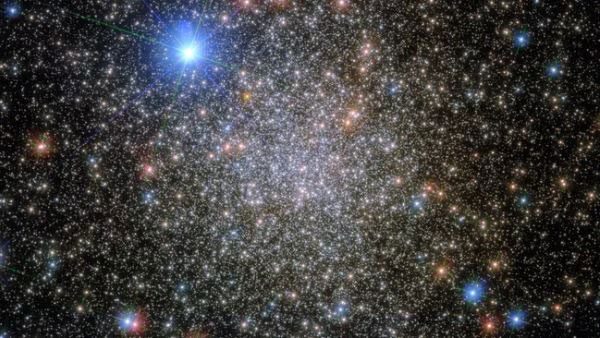An international team of astronomers has published research findings on the formation process of a protostar cluster, recognized as the origin of stars like our Sun.
Scientists have long understood that the light observed through telescopes primarily originates from a small number of massive stars, which are at least eight times the mass of stars like the Sun. These massive stars are born from large protostar clusters. However, there has been very little research on the formation of these star clusters until now.

A group of stars known as a globular cluster. The globular cluster NGC 6380 is located approximately 35,000 light-years from Earth. (Photo: NASA)
To find answers, the research team, led by scientists from Peking University (PKU), utilized several large radio telescopes both domestically and internationally to conduct high-resolution observations of protostar clusters. After years of research, the scientists have finally unraveled the mystery surrounding the entire process of formation and the continuous development of such large protostar clusters.
In a report published in the Astrophysical Journal, the authors state that, in general, stars are believed to form in molecular clouds, a type of cool and dense gas clumped together in galaxies. According to the lead author of the study, Xu Fengwei, the research team observed dense cores within molecular clouds collapsing under gravitational forces, forming primitive stars known as protostars. A large number of protostars, influenced by mutual gravitational interactions, formed protostar clusters, which gradually moved closer together and compacted as the molecular clouds continued to collapse.
Among the 11 observed constellations using the Atacama Large Millimeter/submillimeter Array (ALMA) radio telescope in Chile, the research team identified 248 dense cores, with 106 cores having the potential to become protostars. The large molecular clouds continue to feed gas inward while collapsing under gravitational forces. The more gas that is fed into the dense core of the cloud, the more rapidly this core develops. According to Xu, this may explain the previously known knowledge that, in general, massive stars form within the cores of protostar clusters.
Nonetheless, only a small fraction of molecular clouds ultimately become stars, with the remaining clouds existing as diffuse gas or reverting to previous forms. According to astrophysicist Wang Ke from Peking University, rather than only observing mature star clusters, astronomers can now study the evolution of protostar clusters using improved radio telescope technology and gain deeper insights into the formation of these star clusters.
The research team also included scientists from 20 universities and research institutes, such as the Chinese Academy of Sciences, the University of Chile, and the Harvard & Smithsonian Center for Astrophysics (USA).


















































